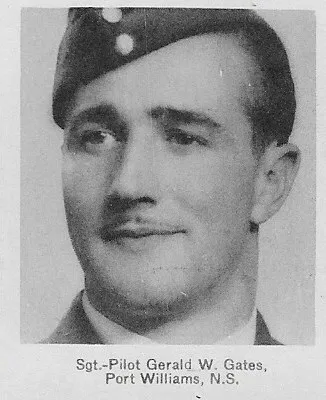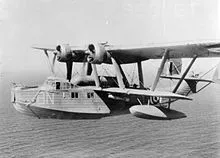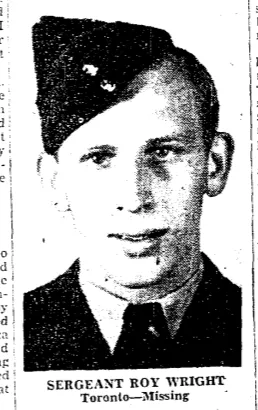Gates, Gerald Waldo
Killed in Flying Accident 1941-09-12


Birth Date: 1916-September-19
Born: Port Williams, Nova Scotia
Son of Justin E. Gates and Viola Gates; husband of Mary Winnifred Gates, of Halifax, Nova Scotia, Canada. Nephew of Pte. Emerson Waldo Gates (283138) who died on August 10, 1918.
Home: Port Williams, Kings County, Nova Scotia
Enlistment: Halifax, Nova Scotia
Enlistment Date: 1940-07-17
Service
RCAF
Unit
4 (C) OTU- Operational Training Unit
Base
Rank
Sergeant
Position
Sergeant
Service Numbers
R/65223
4 Coastal Operational Training Unit. Sergeant GW Gates (RCAF) was killed when Saro London II aircraft K 5913 crashed during a water landing at Cromarty Firth, Scotland
Sergeant GW Gates (RCAF), Sergeant RR Wright (RCAF), AC1 FF Addison (RAFVR), AC2 AC Nixson (RAFVR), AC2 DJ Page (RAFVR) and Sergeant J Perry (RAFVR) were all killed in the crash and buried in various cemeteries in the UK, except AC2 JC Marshall (RAFVR), who was missing, presumed killed. AC2 Marshall has no known grave and is commemorated on the Runnymede War Memorial
Saunders Roe A27 London biplane coastal patrol flying boat. Only 31 were built, entering RAF service in 1936
London K5913
Saunders-Roe London

The Saunders Roe A.27 London was a British military biplane flying boat built by the Saunders Roe company. Only 31 were built, entering service with the Royal Air Force in 1936. Although due for replacement by the outbreak of World War II, they saw some active service pending the introduction of the ultimately unsuccessful Lerwick.
The A.27 London was designed in response to the Air Ministry Specification R.24/31 issued for a "General Purpose Open Sea Patrol Flying Boat" and was based on the Saro A.7 Severn. The London and its contemporary, the Supermarine Stranraer, were the last multi-engine, biplane flying-boats to see service with the RAF. The design utilized an all-metal corrugated hull and fabric-covered wing and tail surfaces, with two Bristol Pegasus II radial engines, mounted on the upper wing to keep them clear of spray while taking off and landing.
The first prototype first flew in March 1934 and then went on to serve until 1936 with 209 and 210 Squadrons RAF at RAF Felixstowe and Gibraltar respectively.
Gradually, the Londons' duties were assumed by newer aircraft such as the Lockheed Hudson, while squadrons flying Atlantic and Mediterranean patrols were re-equipped with Short Sunderlands. Some Londons were transferred to the Royal Canadian Air Force. All were withdrawn from front-line duties by the middle of 1941.Wikipedia
 Port Williams, Kings County, Nova Scotia
Port Williams, Kings County, Nova Scotia Saro London Flying Boat: Cromarty Firth Canmore
Saro London Flying Boat: Cromarty Firth Canmore Canadian Virtual War Memorial
Canadian Virtual War Memorial
 Wikipedia London Flying Boat
Wikipedia London Flying Boat